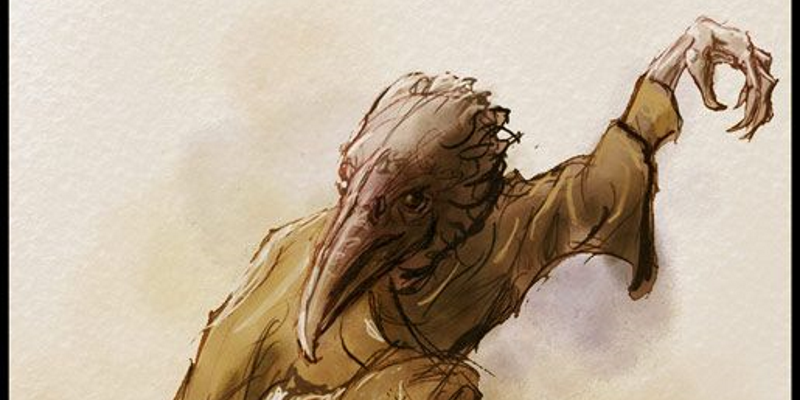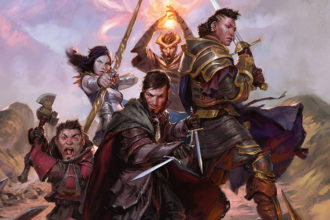Get to Know Celestials

Today I return to the much acclaimed Get to Know series. Ok, I know it’s not acclaimed, and definitely not at a level where I need to modify the size of the acclaim. Whatever, I’m doing it anyway. Instead of looking at a single creature, race, or traditions, I have had a request to look at Celestials. While I definitely won’t cover everything at a fine level of detail, there is enough going on with them, and enough variety that needs to be discussed, that this will extend a bit longer than the usual fare. I am certain I will miss a critical piece that is undoubtedly important to you, but let’s take it as read that I am full of regrets and lamentations. In short, I apologize anything I miss that’s incredibly important to you, as there will likely be a lot of that for a lot of people, since Celestials are so iconic in D&D. This is long, but blame my colleague Brandes Stoddard. It’s his request. Anyway, let’s jump into it!
Unlike Fiends, Celestials took a long while to show up in D&D. In fact, we are well past the introduction of AD&D and into the release of D&D Basic Set 2nd version before they appear. In those days, the Company was in service to the syndic of Beryl D&D hysteria was being whipped into a frenzy. A woman named Patricia Pulling created B.A.D.D., Bothered About Dungeons and Dragons in June of 1982. Patricia Pulling’s son, Irving Lee “Bink” Pulling II committed suicide earlier in the same year. Patricia Pulling believed this was a result of her son playing D&D, specifically reacting to a curse his character received in the game he played. Of course, this was preceded years earlier by the James Dallas Egbert III incident, where a teenager attempted suicide in the service tunnels beneath Michigan State University. Egbert was missing for a month while detectives searched for him. William Dear, the lead investigator, speculated idly that Egbert had gotten lost in the tunnels during a live-action roleplaying game session. This was not true, but the narrative stuck, and that was that. While this occurred in 1979, it is germane to our topic because a book was published in 1981 that was turned into a movie starring Tom Hanks, due in 1982. This movie was Mazes and Monsters. You might have heard of it.
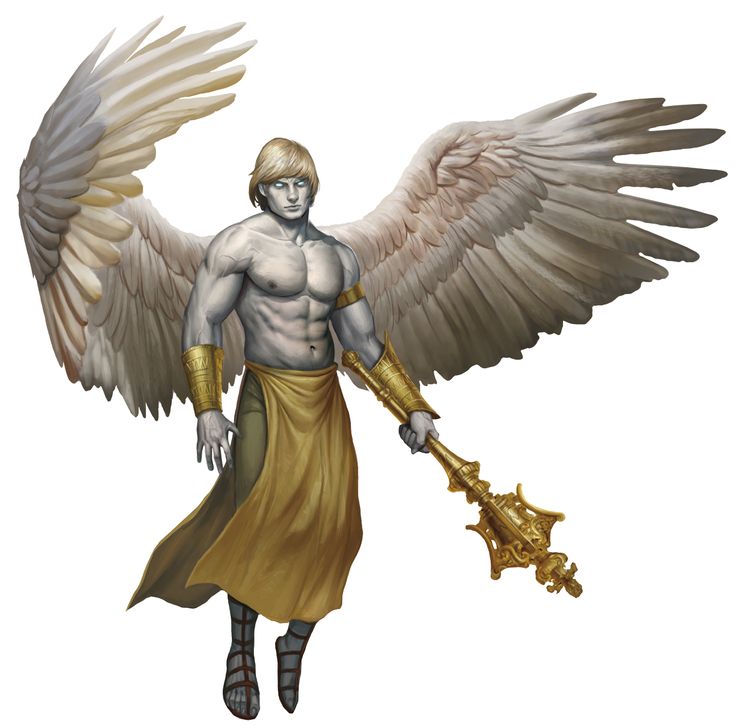
With this context in mind, it’s easy to understand why D&D might have felt the need to introduce some classically good creatures. However, it’s also easy to understand why typical Christian iconography and terminology might not have been the choice the staff wanted to make. Thus, devas are ushered into the world in July 1982, in an issue of Dragon magazine. Deva roughly translates from Sanskrit as “heavenly being,” and has been used in Buddhism, Hinduism, and Jainism, to name a few religions. The general concept is a being with nearly the powers of a god, but without the veneration. Of course, there is a great deal around the devas I am not qualified to address. Suffice to say, while the names are the same, there aren’t a lot of other commonalities. Instead, you basically get western-looking angels that interact with the planes. Astral devas are your prophecy-delivering, messenger of gods, angel of protection types. Monadic devas are guardians of the ethereal and elemental planes, while essentially being angel of war types. Finally, movanic devas patrol the positive, negative, and Prime Material planes.
As far as devas go, nothing important changes for a long while. They are reprinted in 1983’s Monster Manual II, and show up in 1991’s Monstrous Compendium Outer Planes Appendix under the aasimon heading. This was during the time of the rebranding of a lot of D&D staples: devil to baatezu, demon to tanar’ri, and devas to aasimon, among others. This was the first name I knew them by, mostly because I love all things Planescape, and they made an appearance in 1994’s Planescape Monstrous Compendium Appendix. With the advent of 3rd edition, the aasimon category was no more, though the name sticks around in the form of the aasimar (half-celestial people), and the devas are now classified under the celestial heading, which takes us through to the modern day. However, 4e saw a lot of wackiness, and devas were not immune to it.
Devas were released as a playable race in the 4e Player’s Handbook 2, meaning to take the place of aasimar as the celestially-descended player race. It stands to mention there are Sri Lankan myths regarding the deva people as foes of King Ravana and the Raksha. I think they are technically considered a type of aasimar, but like, an aasimar you probably wouldn’t want to go to Vegas with. These devas have angel souls in mortal bodies. They are super beautiful, but in a Doctor Manhattan kind of way. In fact, Doctor Manhattan: the Race isn’t too bad. They are wise and intelligent..or wise and charismatic. Whatever really, as long as you are going to cast spells. They are good against bloodied dudes, positive and negative energy, and they get to make their rolls better. Their racial feat is basically just be “be better”. Their schtick is timeless souls that can recount its past manifestations. I mean, I guess this could sorta be movanic devas as a race? It’s weird, for sure.
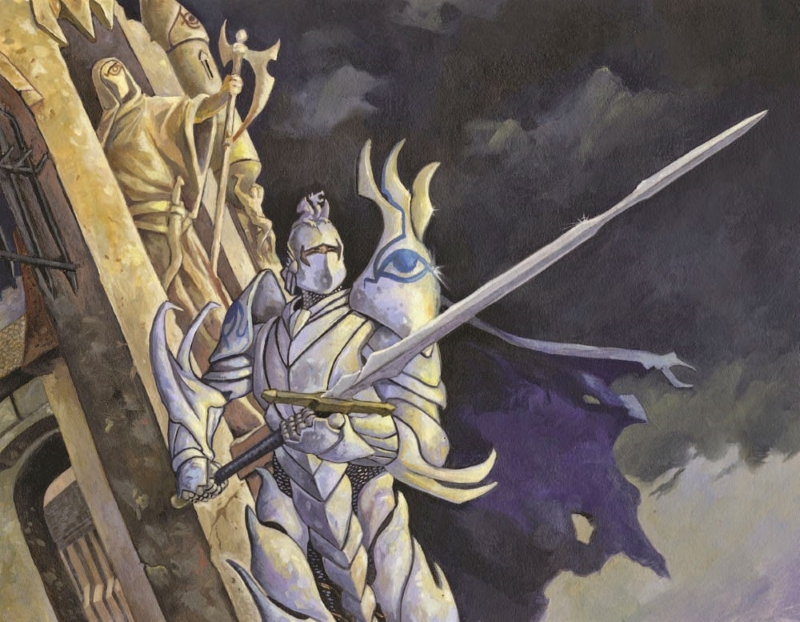
It’s also not like devas are the only celestial that became a standard race, nay. Let’s talk eladrin! Eladrin have a pretty crazy history. Unlike just about everything else in D&D, eladrin didn’t come from a source book, expansion, Dragon magazine, or any of the usual places. Instead, they come from the 1995 Blood Wars Card Game. The eladrin are essentially faeries, but they roam around in the Upper Planes, specifically in Arborea. I say essentially faeries because they aren’t faeries, but are more a Celtic-Arthurian chivalric interpretation of folklore. I mean, they are ruled by Faerie Queen Morwel, but that’s just a misleading title to enhance her mystique… along with titles like Lady of the Lake, having consorts name Faerinaal and Gwynharwyf, and ruling from the ever autumnal Court of Stars. I don’t know why anyone would ever mistake them for faeries. Anyway, their behavior is quite un-fey like, but again, it’s more about the chivalric knighthood than anything.
Typically chaotic good, the eladrin were all about fighting noble battles for the forces of good. In fact, they are really first pitched as Upper Planar mercenaries. Again, this started as something for a card game, but you get a lot of theme through cards like Tulani Champion and Shierre Crusader. The Queen keeps a tight leash on all of the eladrin nobles, focusing on the responsibilities that come with the title. Noble combat and tournaments were a way of life. Again, we see much more focus on the knightly traditions than anything else. By the time they received publication in Planescape Monstrous Compendium Appendix II, the tulani, along with the firre and the ghaele, were categorized as greater eladrin, with shierre joining the bralani, coure, and noviere – see what I mean about the names? – as lesser eladrin. The eladrin play a central role in the Blood Wars, as you might expect given their birth, and have a history in battling the tanar’ri. In fact, Vaeros, a former consort of Morwel, died in the Abyss trying to rescue captured eladrin.
Beyond that fairly obvious conflict, shit gets weird. Not like, Detention weird, but still weird. I mean, I guess you could have a time-traveling taxidermied bear in your game if you wanted. I digress. Faerie Queen Morwell is allied with Zaaman Rul, the archomental. What’s an archomental? Why, the elemental princes/princesses, of course! Zaaman Rul is the Elemental Prince of Goodly Fire Creatures. It also stands to mention that it is suggested the Queen of Stars also gets down with Ben-hadar, Elemental Prince of Goodly Water Creatures. So, there is elemental war stuff going down, and the Queen loans out knights. Additionally, the eladrin vehemently oppose the linnorm, ancient primeval dragon dudes. In fact, the Queen has an ongoing feud with dread linnorm Redfang. Dread linnorm is a classification of linnorm that has two heads, largest of all linnorms, but most interested in scholarly pursuits – forbidden knowledge, lost lore, stuff like that. Only the corpse-tearer linnorm outshines the dread linnorm.
Eladrin got an awful lot of lore in 3.x. This came on the heels of eladrin becoming playable in one of the last 2nd edition supplements, Warriors of Heaven, released in 1999. Ghaele eladrin make the cut under the celestial header in the 2000 Monster Manual, firre eladrin make the cut for 2001’s Manual of the Planes, and 2003’s Savage Species presented ghaele eladrin as both a class and a race for play. When 3.5 was released the same year, bralani and ghaele make the cut for the revised Monster Manual. Coure, firre, shiradi (shierre), and tulani all get some time in Book of Exalted Deeds, again released in 2003, along with a feature on the Court of Stars. Their role in the Blood War even got revisited in Fiendish Codex I: Hordes of the Abyss, released in 2006.
In a big shift, eladrin got announced as one of the core races for 4e. It’s not too surprising – again, look at that huge ramp in attention – but the tack they took was interesting. Instead of being celestial beings based on Celtic-Arthurian traditions, they shift to being full-on fey. Of course, all elves are fey in 4e, with the mortal elves having arrived during the war between Corellon and Lolth. The eladrin now live in the Feywild, having split with the elves during the war. They are more overtly magical than normal elves, and their history gets a nod with some paragon options like Shierre Knight, and some of the creatures included in the edition. Really, they are more like elves opting to go into the West. I am not saying the feywild/Arborea is Valinor…but I’m not not saying that. Really, Noldor or Grey Elves are what this is hitting. As an aside, the eladrin had Sun and Moon elves rolled under them in Neverwinter. It’s just a drastic shift from “these are not faeries, don’t call them fey” to ”nah son, they fey af.” 5e keeps this tradition, as the eladrin were released as an elf sub-race as part of the DMG. Here, they are even more fey, with drifting, fleeting cities that cross between the Feywild and the Material world.
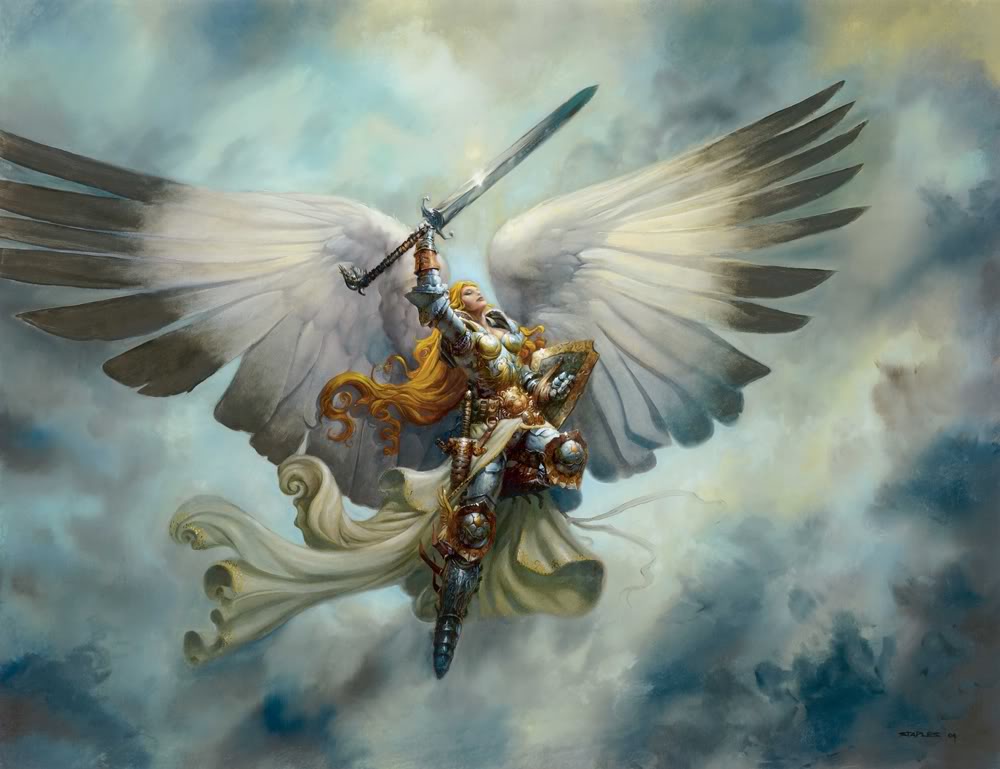
Speaking of the 5e DMG, the eladrin appear next to the aasimar. I’m a hella fan boy of the original aasimar and tieflings. I love how messed up the half-breeds could appear, and the aspects chart is a big reason I love the minor magic items chart – they add so much flavor and theme. Not to mention you can really understand how a dude who looks like a greasy, dying crow and a woman with skin like a gold, glittering carapace might be equally avoided, regardless of which side of the planes their heritage lies on. Playable aasimar are twenty years old this year, as they made their appearance as a player race in the 1996 Planeswalker Handbook, though they also appeared in the Planescape Monstrous Compendium Appendix II and in Warriors of Heaven. From the outset of 3rd, they remained core, popping up in the Monster Manual, and were expanded into a playable race as part of the Forgotten Realms materials, because of course they did. They ended up with a little more spotlight in 3.5, as the Planar Handbook was released, along with Races of Destiny. The aasimar were always meant as an opposite number to the tieflings, though the shift from weird Upper Planes heritage to more and more typical winged-angelic heritage was ongoing, and disappointing to me. I mean, I’m all for angels with lion-bear-goat midsections and bug-faces, but let me tell you that most people don’t ascribe to that route. In 4e, they were entirely absent (see devas above), but in 5e they are back in the DMG as an alternate race, mimicking tieflings, though their appearances are now just CW-actor-level humans, I guess. Unfortunately, they are really written as “like humans, but better in every conceivable way.” In short, boo.
Moving back from the playable races and their shifts, let’s zoom back out to a higher level. We’ve talked about devas and eladrin, but we still have planetars, solars, archons, and guardinals, not to mention lots of other stuff I am probably missing.
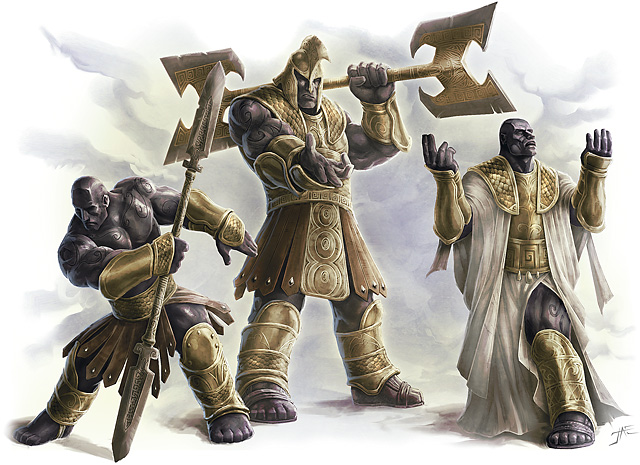
Planetars are your bad-ass celestial generals, though they sometimes show up to party with mortals who go to kill big evil things. They show up around the same time as devas, in Dragon #64, the August 1982 issue. They share the publication in the Monster Manual II, but don’t really undergo too many changes that aren’t a result of a name change – aasimon, celestial, angel, celestial, etc. The planetar was joined by the solar in the same publications, with the solar being the baddest of the bad, meant to rival pit fiends and be your truly epic angels. These guys have arrows of slaying, dancing greatswords, full cleric casting progression, and so on. Not really much else to say here, frankly. Archons, however, are pretty rad.
Archons are your weirder angels, with dudes like hound archons (angels with dog heads), lantern archons (floating balls of light), trumpet archons (basically trumpet muses, with all that entails), and all of the other goodness that you might expect from this kind of thing. The lion-bear-goat archangel would be at home here, as would the ring of eyes with a snake in the middle, or a doorway of wings. Archons, as a guideline, are the more directed angels. They are creatures of purpose and intent, often conveying vengeance or menace. They are good guys, but you know, those type of good guys. Having an archon show up will make people nervous, is what I am saying. They are the lesser celestial beings.
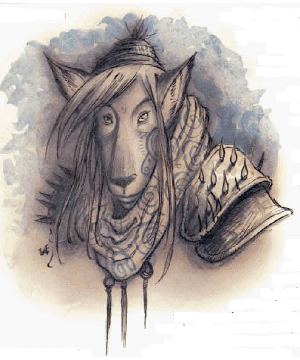
Guardinals are also sorta weirdos, but not really. Guardinals are nature celestials. Like the eladrin, these bad boys appeared in the Blood Wars Card Game. Across the board, these are animal people. You have the avoral, winged guardinals with good eyesight; cervidals, satyr foot soldier guys; equinals, likeable horse champions; leonals, lion warriors; lupinals, wolf spy hunters; mustevals, muskrat ferret spies; and ursinals, bear lore keepers. These aren’t actual animals, but people-animal-celestial hybrids, as one does. Guardinals tend to be lower-powered than many other celestials, and would fall pretty firmly into the lesser celestial category, though exceptions definitely occur. The Book of Exalted Deeds goes into a lot of detail about the celestial guardinal paragons, telling tales of Talisid the Celestial Lion, Sathia the Sky Duchess, Manath the Horned Duke, Duchess Vhara of the Fields, Kharash the Stalker, and the Great Bear Bharrai. You can tell which kind each one is without any investigation, I bet. Anyway, I like fabled goodly animal-people guardians as much as the next guy, within reason, so guardinals are cool in my book.
There are myriad more celestials, such as the totally rad Inevitables of Mechanus, because the term generally applies to any creature of the Upper Planes. (Edit: While Mechanus isn’t an Upper Plane, it has gate cities that connect. It’s not a shock the denizens can created a construct that so closely adheres to the original that it falls into the same classification.) This means there are plenty more I could have talked about here, but I wanted to stick to the big ones in order to give them some more context and talk about their histories. That doesn’t meant I don’t like the others or wouldn’t talk about them in the future. It means I have indulged long enough and should probably go ahead and curtail the discussion. If it’s not clear, I love the planes and take any excuse to discuss them as much as possible. I could really talk about this stuff all day, which I think is evident at this point. I hope you stuck with me thus far, and had a chance to learn something new. If there is something you want me to discuss in the future, just let me know in the comments!

